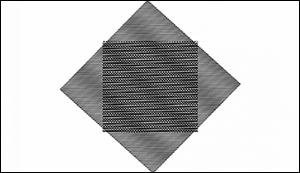Physicists may have accidentally discovered a new state of matter
2. 3. 2020 | Northeastern University | www.northeastern.edu
Humans have been studying electric charge for thousands of years, and the results have shaped modern civilization. Our daily lives depend on electric lighting, smartphones, cars, and computers, in ways that the first individuals to take note of a static shock or a bolt of lightning could never have imagined.
Now, physicists at Northeastern have discovered a new way to manipulate electric charge. And the changes to the future of our technology could be monumental. The ability to move, manipulate, and store electrons is key to the vast majority of modern technology, whether we’re trying to harvest energy from the sun or play Plants vs. Zombies on our phone. In a paper published in Nanoscale, the researchers described a way to make electrons do something entirely new: Distribute themselves evenly into a stationary, crystalline pattern.

The phenomenon appeared while the researchers were running experiments with crystalline materials that are only a few atoms thick, known as 2D materials. These materials are made up of a repeating pattern of atoms, like an endless checkerboard, and are so thin that the electrons in them can only move in two dimensions.
Read more at Northeastern University
Image Credit: Hannah Moore/Northeastern University
-jk-




